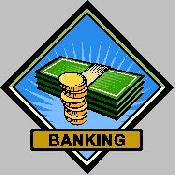
 |
|
| Financial Terms | |
| Planned amortization class CMO |
|
Information about financial, finance, business, accounting, payroll, inventory, investment, money, inventory control, stock trading, financial advisor, tax advisor, credit.
Main Page: stock trading, finance, inventory control, business, financial advisor, accounting, financial, inventory, Also see related: mortgage, insurance, credit, first time homebuyer, homebuyer, home buyer, real estate, buy home, homebuying, |
Definition of Planned amortization class CMO
Planned amortization class CMO1) One class of cmo that carries the most stable cash flows and the
Related Terms:AmortizationThe repayment of a loan by installments. Amortization factorThe pool factor implied by the scheduled amortization assuming no prepayemts. Asset classesCategories of assets, such as stocks, bonds, real estate and foreign securities. Collateralized mortgage obligation (CMO)A security backed by a pool of pass-throughs , structured so that Loan amortization scheduleThe schedule for repaying the interest and principal on a loan. Negative amortizationA loan repayment schedule in which the outstanding principal balance of the loan Planned capital expenditure programCapital expenditure program as outlined in the corporate financial plan.  Planned financing programProgram of short-term and long-term financing as outlined in the corporate Risk classesGroups of projects that have approximately the same amount of risk. AmortizationSee depreciation, but usually in relation to assets attached to leased property. Earnings before interest, taxes, depreciation and amortization (EBITDA)The operating profit before deducting interest, tax, depreciation and amortization. amortizationThis term has two quite different meanings. First, it may functional classificationa separation of costs into groups based on the similar reason for their incurrence; it includes AmortizationReduction in value of an asset over some period for accounting AmortizationThe write-off of an asset over the period when the asset is used. This term Classical MacroeconomicsThe school of macroeconomic thought prior to the rise of Keynesianism.  New ClassicalsEconomists who, like classical economists, believe that wages and prices are sufficiently flexible to solve the unemployment problem without help from government policy. AmortizationThe systematic and rational allocation of capitalized costs over their useful lives. Average Amortization PeriodThe average useful life of a company's collective amortizable asset base. Earnings Before Interest, Taxes, Depreciation, and Amortization (EBITDA)An earningsbased measure that, for many, serves as a surrogate for cash flow. Actually consists of working Extended Amortization PeriodAn amortization period that continues beyond a long-lived asset's economic useful life. Extended Amortization PeriodsAmortizing capitalized expenditures over estimated useful lives that are unduly optimistic. ABC inventory classificationA method for dividing inventory into classifications, Unplanned receiptA stock receipt for which no order was placed or for which an AmortizationThe reduction of debt by regular payments of interest and principal sufficient to pay off a loan by maturity. Amortization ScheduleA schedule that shows precisely how a loan will be repaid. The schedule gives the required payment on each specific date and shows how much of it constitutes interest and how much constitutes repayments of principal. amortizationThe repayment of a loan by installments. Amortization (Credit Insurance)Refers to the reduction of debt by regular payments of interest and principal in order to pay off a loan by maturity. Risk classA group of insureds who present similar risk to the insurance company. Risk classes include - standard, preferred, nonsmoker, substandard, uninsurable. Related to : financial, finance, business, accounting, payroll, inventory, investment, money, inventory control, stock trading, financial advisor, tax advisor, credit. |